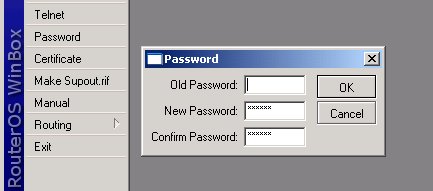Securing MikroTik Router Implementing Two-Factor Authentication
There is no doubt that securing your router is of utmost importance. With the increasing number of cyber-attacks and hacking attempts, it becomes imperative to take necessary steps to ensure that your router and the network it handles, is protected from malicious attacks.

The data clearly shows the importance of securing your router, and it is imperative that you take necessary steps to ensure that your network is safe. Here are a few ways in which you can secure your router:
Change the default login credentials
The very first thing that you need to do to secure your router is to change the default login credentials. Most routers come with a default username and password set by the manufacturer. Hackers are well aware of these default credentials, and they can easily gain access to your network if you leave these default credentials unchanged. Make sure to change the router's default login credentials as soon as you set up the router.
Enable WPA2 encryption
Enabling WPA2 encryption is crucial for securing your router. WPA2 is the most secure form of encryption available today, and it is a great way to prevent unauthorized access to your network. Enabling WPA2 encryption ensures that your Wi-Fi network is protected from hacking attempts and cyber-attacks.
Disable WPS
WPS (Wi-Fi Protected Setup) is a feature that allows devices to connect to a Wi-Fi network using a PIN or a button-press rather than entering a password. However, this feature is also a major security vulnerability, as attackers can exploit this feature to gain access to your Wi-Fi network. It is recommended that you disable WPS on your router to prevent any potential cyber-attacks.
Disable Remote Management
Remote management is a feature commonly found on routers that allows you to manage your router's settings from a remote location using a web browser or mobile app. While this feature can be convenient, it is also a major security vulnerability. Attackers can exploit this feature to gain access to your router and network. It is recommended that you disable remote management on your router to prevent any potential cyber-attacks.
Enable Firewall
A firewall is a software program or device that prevents unauthorized access to a network. Enabling a firewall on your router helps prevent unauthorized access to your network. A firewall can also help prevent malware and other malicious software from accessing your network and compromising your security. It is recommended that you enable the firewall on your router to protect your network and your devices.
Update firmware regularly
Regularly updating the firmware on your router is another important step in securing your router. Firmware updates often include security patches that address known vulnerabilities in the routers. Regularly updating your router's firmware ensures that you are protected against the latest security threats and that your router is operating at its best.
Conclusion
In conclusion, securing your router is extremely important to help protect your network and your devices from cyber-attacks and hacking attempts. By following the above steps, you can ensure that your router is adequately protected and that your network is secure. Remember to always keep your router updated and change the default login credentials as soon as possible, to stay ahead of any potential security threats.




Post a Comment for "Securing MikroTik Router Implementing Two-Factor Authentication"